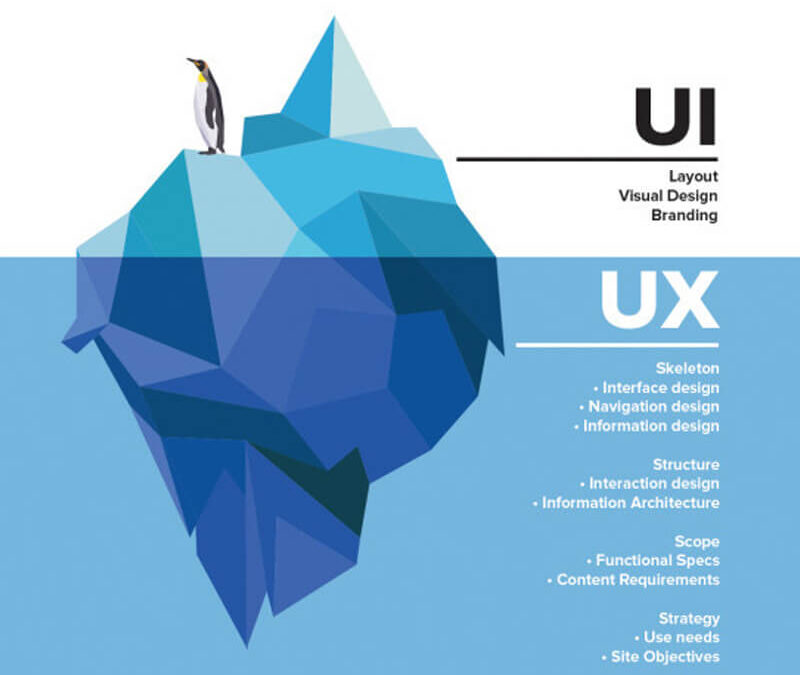UI vs. UX – What’s the difference between user interface and user experience?
Simply put, the user interface (UI) is the series of screens, pages, and visual elements—like buttons and icons—that enable a person to interact with a product or service.
User experience (UX), on the other hand, is the internal experience that a person has as they interact with every aspect of a company’s products and services.
It’s common for people to use these terms interchangeably, or sometimes incorrectly. As such, if you’ve ever wondered, “What is UI, what is UX, and what’s the difference between them?”, you’re in luck. Today we’ll take a look at them and see what they are and what role do they play.
First of all – UI, what is it?
UI, or user interface, is anything a user may interact with to use a digital product or service. This includes everything from screens and touchscreens, keyboards and sounds. To understand the evolution of UI, however, it’s helpful to learn a bit more about its history and how it has evolved into best practices and a profession.
A short history lesson
About 50 years ago, if you wanted to use a computer, you had to use the command line interface. The graphical interfaces used today didn’t yet exist. For a computer to work, users needed to communicate via programming language, requiring seemingly infinite lines of code to complete a simple task.
By the 1980’s the first graphical user interface (GUI) was developed by computer scientists at Xerox PARC. With this groundbreaking innovation, users could now interact with their personal computers by visually submitting commands through icons, buttons, menus, and checkboxes. This was a much more pleasant experience for everyone, especially customers that were less knowledgeable.
By 1984 Apple Computer released the Macintosh personal computer which included a point and click mouse. The Macintosh was the first commercially successful home computer to use this type of interface.
This is how UI was born. Nowadays, we couldn’t even imagine ourselves not having any UI on the software/apps that we use all day long.
What about UX?
User experience, or UX, evolved as a result of the improvements to UI. Once there was something for users to interact with, their experience, whether positive, negative, or neutral, changed how users felt about those interactions.
That’s a broad definition that could encompass every possible interaction a person could have with a product or service—not just a digital experience. Some UX professionals have opted for calling the field customer experience, and others have gone a step further to simply refer to the field as experience design.
Providing an exceptional and memorable user experience that attracts loyal customers are designed with both the ease of the process, and the overall experience. It’s all about balancing pleasure and functionality. Within seconds of viewing your app, site or product, your user should have a clear understanding of how your interface works and why it’s valuable to them. Often your UX design is a major deciding factor of whether a user becomes a loyal user, or leaves your site for a competitor.
UX design takes place during the development stage. It includes everything involved in the overarching idea of optimizing a product for effective and enjoyable use, such as:s
- Competitor & customer analysis
- Product structure & strategy
- Wire-framing and prototyping
- Hands-on user testing, iteration, research, development, content, and prototyping to test results.
- Develop and improve the interaction between a user and all facets of a company.
Great, so what’s the difference between UI and UX?
At the most basic level, UI is made up of all the elements that enable someone to interact with a product or service. UX, on the other hand, is what the individual interacting with that product or service takes away from the entire experience.
Think about Google, it’s a great example of both UI and UX. It has a super simple interface, containing a search-bar and the search button. That’s UI minimalism at its best, extremely easy to use and accessible by everyone.
Now let me ask you this – what if it took 20 seconds for google to display a result every single time you’ve searched for something? The experience would be absolutely terrible. Nobody would use it even though the UI is still amazing and nothing has changed.
This is why UX is just as important as UI and why they work excellently together. Theoretically UI is a part of UX, because the interface is actually a part of the user experience.
Conclusion
UI and UX aren’t the same thing at all. They both refer to end-users and their experience, they are similar, but totally different.
UX encompasses all the experiences a person has with a product or service, whereas UI is specific to the means by which people interact with a product or service.
The main difference to bear in mind is this: UX design is all about the overall feel of the experience, while UI design is all about how the product’s interfaces look and function.

